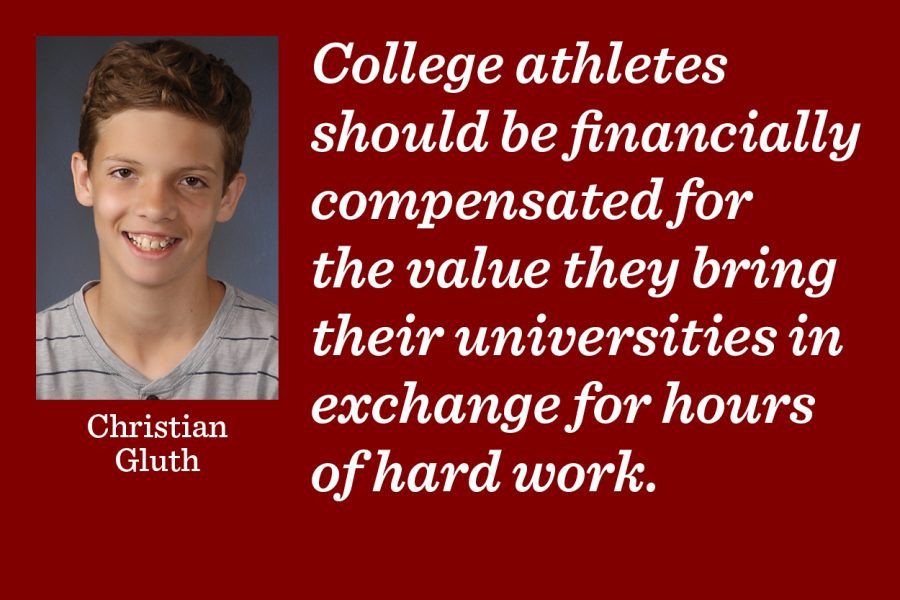Colleges need to pay athletes for their commitment
March 14, 2019
As the No. 1 team in college basketball on Feb. 20, 2019, the Duke Blue Devils hosted their bitter in-state rivals, the No. 8-ranked North Carolina Tar Heels. The cheapest tickets neared Super Bowl prices, listed at over $2,500. The main attraction: the jump-out-of-the-gym, 6-foot-7, Duke phenom Zion Williamson.
About 30 seconds in, Williamson stopped at the top of the key after bailing on a drive to the basket. As he pivoted 180 degrees to pass the ball to his teammate, the torque from the turn forced his foot to rip through his shoe. The awkwardness of the action forced him to collapse to the ground, grabbing his knee along the way. Although only a minor knee sprain, it physically goes to show the risk that a sports prospect is forced to put forth without being paid, leading Williamson to question whether it is worth it to play in Durham again.
College athletes should be financially compensated for the value they bring their universities in exchange for hours of hard work that generates millions of dollars — including massive salaries for the coaches and athletic administrators. For athletes who pour their lives into basketball, like Williamson, it would make sense to be appropriately rewarded for the time, effort and risk they put into a sport that may have lifetime consequences to their health. Certainly, nobody at Duke University would challenge the concept of undergraduate finance major earning cash while playing the stock market or working as an intern at a bank.
Yet student athletes are prohibited from similarly profiting financially from within their athletic field of interest. If student athletes got paid, it might allow them to stay longer at their school to complete their education, as they would likely be less eager to leave school and chase money in professional sports.
What’s stopping the National Collegiate Athletic Association from distributing some of the approximately $8 billion generated each year from athletics to the players who generate it? The NCAA claims that imbalanced salaries could corrupt the spirit of college sports. To solve this, they could pay players a share of revenue based on their value to their program. Granting athletes marketing rights to their own images and allowing high-profile athletes to sign marketing deals with sports apparel companies would stop unethical usage and manipulation of an athlete’s likeness. Preventing unfairness would include distributing a stipend of earnings above and beyond the cost of school tuition and attendance to include spending money, as well as developing a program to provide long-term health expense coverage for athletic-related injuries. These methods would could be feasible and fair as long as there is a minimum and a cap to the amount a player could be paid that is transparent to all parties involved.
With March Madness approaching and still no re-appearance of Zion Williamson, other players could be more inclined to follow along their pathway rather than risk injury. The National Basketball Association is considering dropping the age limit to allow players to go pro straight from high school. March Madness could lose attention and its magic if talented players stop playing college basketball.




























































